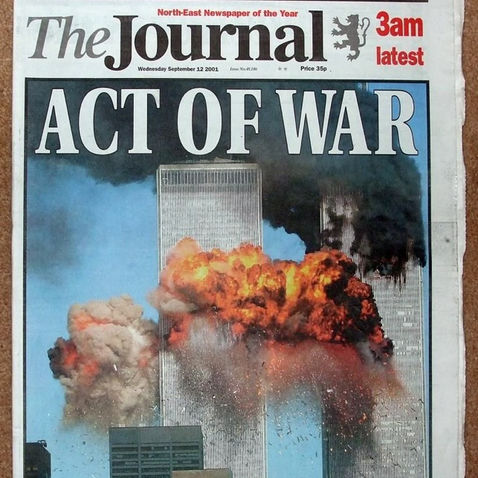9.11
I was five years old when the World Trade Center was attacked on September 11, 2001. Even though I only lived an hour away and my Dad worked in Manhattan, I remember nothing about that day: where I was, what I was doing or the reactions of the adults around me. For me, it was just another normal day in kindergarten.
But I do remember the details of September 11, 2002.
My first grade teacher told us it was a day of remembrance. The pledge of allegiance felt sad. We knew something bad had happened -- that we were remembering those people in our community and beyond who were the victims of something horrible, something scary. But what was it exactly? None of us really knew.
I have come to realize that part of the reason I don’t remember any details about the events of 9/11 is because of the efforts of parents and other adults to keep us shielded from such a frightening event. My elementary school in Westport, CT -- a small town only an hour drive from New York City -- told parents to refrain from picking their children up, in order to keep things as normal as possible. So I carried on finger painting, playing kitchen and reading picture books while my mom cried in front of the T.V. at home.
At the time, my Dad worked for a news channel in New York City, so he stayed there overnight as more details were discovered and broadcast across the world. News channels continued to play footage of the plane crashes and the terrified faces of those who watched the flames and smoke eat away the World Trade Center buildings.
Our parents’ immediate reaction was to freeze in horror, but then to protect. Protect their children who were just beginning to develop concrete ideas about the world.
They didn’t want us to be afraid.
Unlike the reasons they put us in bike helmets, smothered us with sunscreen lotion and kept their eyes glued to us as we ran around on the playground, this protection was purely psychological. It was easier to enclose their fear in the adult world; to bury it under hushed tones and hide it in side conversations at the pick-up area at school or on the playground. The less the children were afraid, the better.
At least that’s what they thought...
Now it's 17 years later.
I am 22 years old. Since 9/11, our country and the rest of the world has experienced shock and tragedy again and again.
We are millennials and we are the anxious generation.
We are the most anxious generation yet -- in therapy, on medication, and often depressed. Why? Partly because of what has happened since we were born. But also, because our parents did everything in their power to make our lives feel safe, free of worry, and to protect us from experiencing something that is part of life: Fear.
In this project I will examine:
-
the difference between fear and anxiety
-
the difference between the childhood of millennials versus our baby boomer parents, and
-
how we, as a generation, can rise above the culture of fear in which we were raised and fear less
Please note: the stories you are about to read offer a limited perspective from one millennial. My experiences do not represent the generation as a whole.
Now let's begin by asking...
“I went to the paint store to pick out a shade of paint for the family room for painters who had come to the house that day. The man in the paint store was listening to the radio and everyone was gathered around. A small plane had crashed into one of the Trade Center buildings, but it was thought to be an accident. When I got home, I turned on the T.V. just in time to see the second plane crash into the tower. I stood there with two men I had never met before crying with your baby sister on my hip. We were all horrified. Later, I went down to the beach with a neighbor and we watched two fighter jets fly by and a battleship pass on its way to Manhattan.
It was the scariest day ever.”





